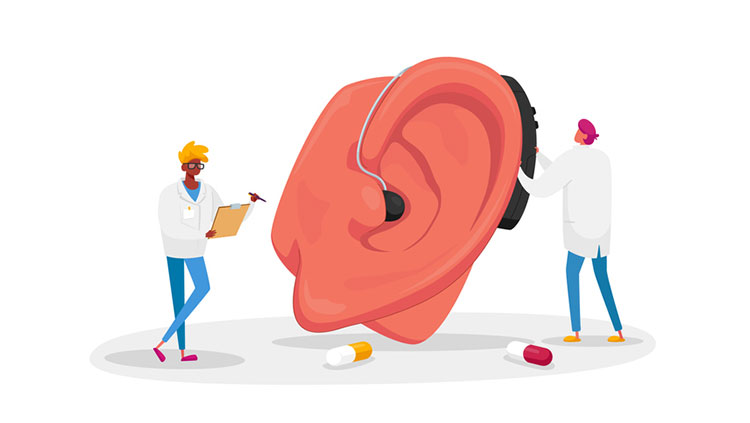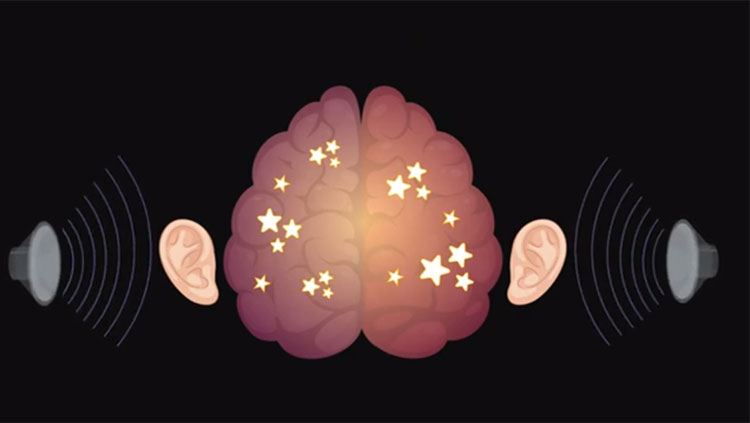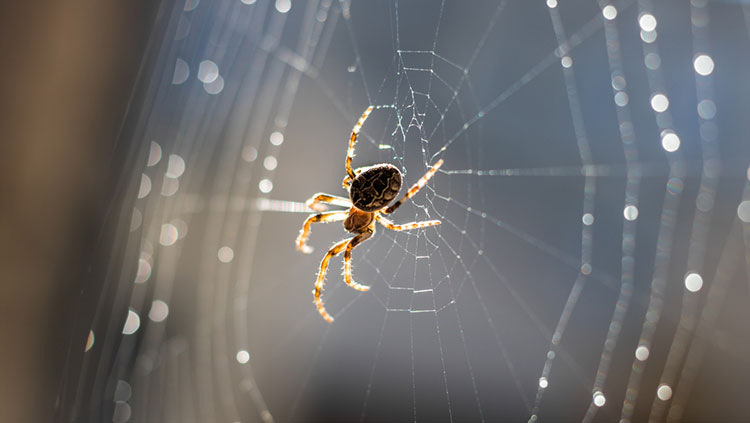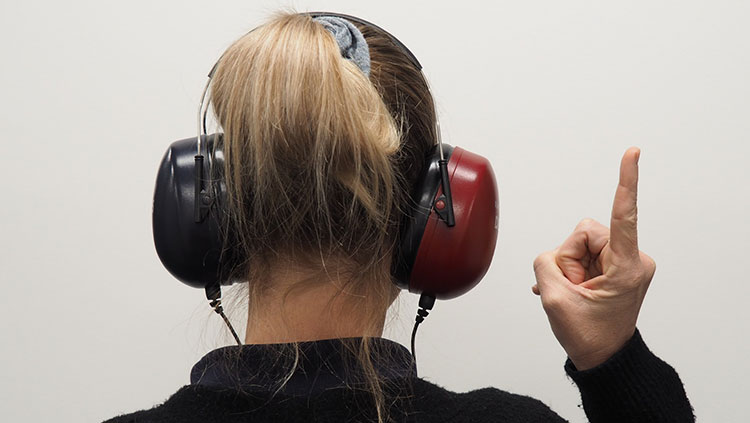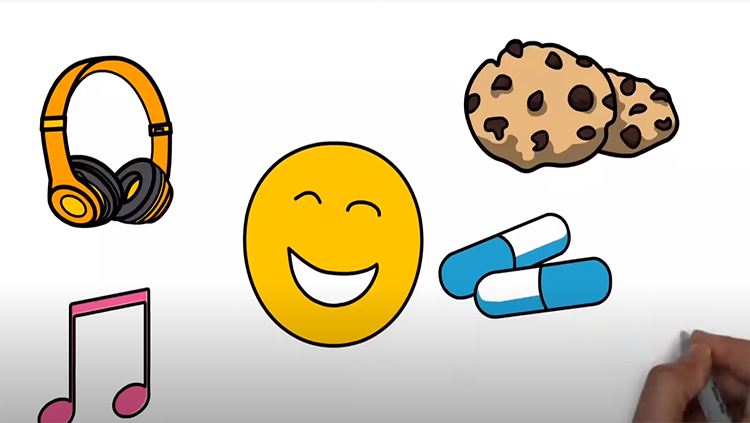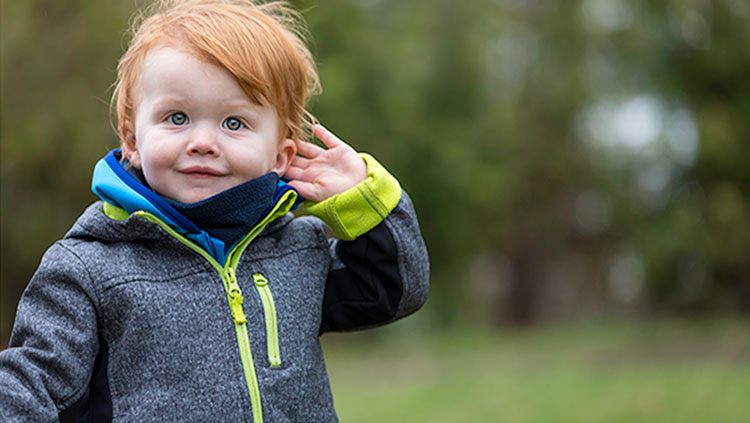
You just got a delicious cup of hot chocolate from your favorite cafe. Taking care not to jostle the whipped cream topping, you get ready to cross the street to the neighboring park. Suddenly the sounds of a revving car engine and the roll of tires disturb the otherwise quiet street. Standing around the corner, you can’t yet see the approaching vehicle, so you stop and wait.
You knew the car was coming around the corner because of your ability to hear. It was also useful at the café listening to the barista take your order. Hearing helps you communicate by processing and interpreting complex messages from the sounds of speech. The hearing system picks up several qualities of sounds including pitch, loudness, duration, and location. The auditory system analyzes complex sounds by breaking them into separate components or frequencies, so you can follow one voice in a conversation or pick out individual instruments in a song.
Whether it’s helping you survive or communicate, hearing is a critical sense with a complex internal system from ear to ear.
Can You Hear Me Now?
The dreaded morning alarm. The cellphone ringtone. Your favorite jogging music. All these sounds activate the auditory system. A series of steps convert those sounds into electrical signals to get the process rolling. Sound in the form of air pressure waves reaches the outer, external parts of your ears. The waves follow the ears’ funnel shape until they reach each ear canal. Then the sound waves pass from one little structure to another, traveling deeper into the ear. First, the waves encounter the eardrum, which vibrates in response to the sound waves and transmits that motion to three tiny, sound-amplifying bones in the middle ear: the malleus, incus, and stapes. Sound waves wiggle all the bones in the chain until the last bone, the stapes, pushes on the oval window — a membrane separating the air-filled middle ear from the inner ear. When the vibrations reach the inner ear, they ripple the fluid inside a snail-shell-shaped structure called the cochlea. Now the sound waves are waves in liquid. In the cochlea, specialized receptor cells — hair cells — convert the liquid motion into electrical signals that travel on to the brain.
From Pressure Wave to Electrical Signal
Running along the inside of the cochlea like a winding ramp is the basilar membrane. This elastic membrane spirals from the outer coil, near the oval window, to the innermost coil. The basilar membrane is “tuned” along its length to different frequencies, or pitches. It moves when the fluid inside the cochlea ripples in response to structures moving in the middle ear. Higher-pitched sounds, like the screech from audio feedback, vibrate the membrane near the oval window. The center of the membrane responds to lower-pitched sounds like a bass drum.
Rows of small sensory hair cells, stereocilia, ride the top of the vibrating basilar membrane. These cells are topped with bundles of microscopic hair-like structures. Several thousand hair cells are positioned along the length of the basilar membrane. Each cell responds most strongly to just a narrow range of sound frequencies, depending on its location on the cochlea. Each nerve fiber connected with the hair cells is tuned to precise frequencies. This specificity creates a kind of frequency map sent into the brain.
When the membrane moves up and down, the hairs bend against an overlying structure called the tectorial membrane. This bending opens small channels in the hairs, allowing ions in the surrounding fluid to rush in and convert the physical movement into an electrochemical signal. Stimulated hair cells excite the auditory nerve, which sends its electrical signals on to the brainstem.
The next stop for sound processing is the thalamus. Located just above the brainstem, the thalamus is the brain’s relay station for incoming sensory information. Then the information travels to the auditory part of the cerebral cortex.
Making Sense of Sound
The brainstem and thalamus use the information from both ears to compute a sound’s direction and location. In the primary auditory cortex different auditory neurons respond to different frequencies, which maintains the frequency map generated by the hair cells. Some cortical neurons respond to sound qualities including intensity, duration, or a change in frequency, while others are selective for complex sounds. Still others specialize in various combinations of tones. At higher levels in the brain, neurons can process harmony, rhythm, and melody. These neurons combine the different types of auditory information so you can recognize a voice or instrument.
Hearing Problems and Loss
While both sides of the brain process sound, the left side is typically responsible for understanding and producing speech. Brain damage can affect this process. A stroke, for example, may damage the left auditory cortex. Someone who suffers injury in that area — particularly in Wernicke’s area — can hear speech but no longer understand the meaning.
Hearing loss is a frustrating challenge for many people, particularly older adults. It typically happens when hair cells, unable to regenerate, die off. Cell damage and loss accumulates over a lifetime, which is why older adults have trouble hearing, especially higher pitches. Since hearing is such an informative sense for social situations and detecting danger, researchers are examining ways to restore it. They’re studying how inner ear structures like hair cells develop and function to find new avenues for treatment.
This article was adapted from the 8th edition of Brain Facts by Sandra Blumenrath.
CONTENT PROVIDED BY
BrainFacts/SfN
What to Read Next
Also In Hearing
Trending
Popular articles on BrainFacts.org





